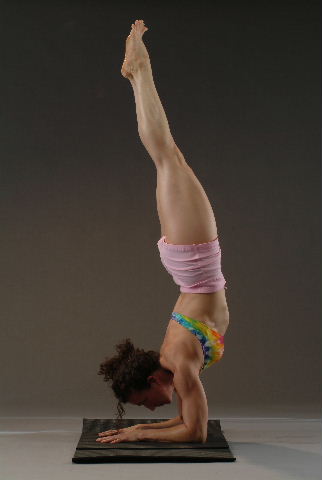Yoga is not what it seems
/Charles Weidman --Photo by Barbara Morgan (1944). Gift of Mr. and Mrs. David C. Ruttenberg, 1987
I admit that I've had it out for yoga for years. It is not the fact that people are getting to know themselves by practicing something physical with discipline, that part I find beautiful. My problem has always been that yoga seemed so "in the box" when compared to dance and martial arts. To put it bluntly, if your "downward dog" doesn't eventually scamper around the room and chase its tail, what is the point?
Years ago I had a dance teacher who trained with one of the early moderns,
Charles Weidman. Incidentally, his stuff rocked. Anyway she said to the class one day, "You know at some point during the late 70's people started saying that the way I start my class is like yoga. It wasn't until years later that I took a yoga class and saw what they meant. I wonder where those early modern dancers learned it?" Hmmm....
I was at a party a couple of years ago and spoke with a woman who made a lot of dough in the first internet explosion. She has been a Zen practitioner for 30 years and has practiced yoga for the last 20. She told me that when she first started practicing yoga, the meditation component was entirely Vippassina oriented. Meaning that it was a process of examining and transcending the body. Now yoga classes are almost all Zen (what she referred to as the "Insight" tradition) oriented meditation, meaning they see the precision of the posture as the method and the result, non-conceptual, non-transcendent, emptiness without a goal.

She wasn't really taking sides as to which type of meditation goes better with yoga, and neither am I, she was just saying it is an unacknowledged innovation.
Well, maybe this article from Yoga Journal will shed some light, as the yoga crew are fond of saying. The article is partly a review of The Yoga Tradition of the Mysore Palace by N. E. Sjoman, as this quote shows:
Modern hatha yoga draws on British gymnastics? The yoga of Iyengar, Pattabhi Jois, and Krishnamacharya influenced by a potpourri that included Indian wrestlers? These are claims guaranteed to send a frisson of horror up the limber spine of any yoga fundamentalist. But according to Sjoman, his book is meant not to debunk yoga, but to pay tribute to it as a dynamic, growing, and ever-changing art.
Here is a quick quote from an Amazon review:
The core of the book is a translation of a text from the 1800s from the private library of the Mysore palace which is the only textual documentation of an extended asana practice - asanas being the yoga positions that form the core of yoga practice today.
I haven't read the book but it purportedly explains that the standing and inverted posses in yoga come from western gymnastics and the ubiquitous "sun salutations" come from Indian wrestling!
Is it true? I don't know, but you gotta love this stuff.
Oh, and just in case anybody is wondering (or listening) all that health stuff about how this or that posture is good for this or that organ, this or that problem...that all happened in the last ten years! --Intelligent people combining personal experience with wishful thinking and a little (Martha Steward inspired) "distressing" the surface to give it that antique feel!
Check out this wonderful list of all the things people are doing with Yoga these days over at Jen's Reviews. 18 Amazing Benefits of Yoga, According to Science.


